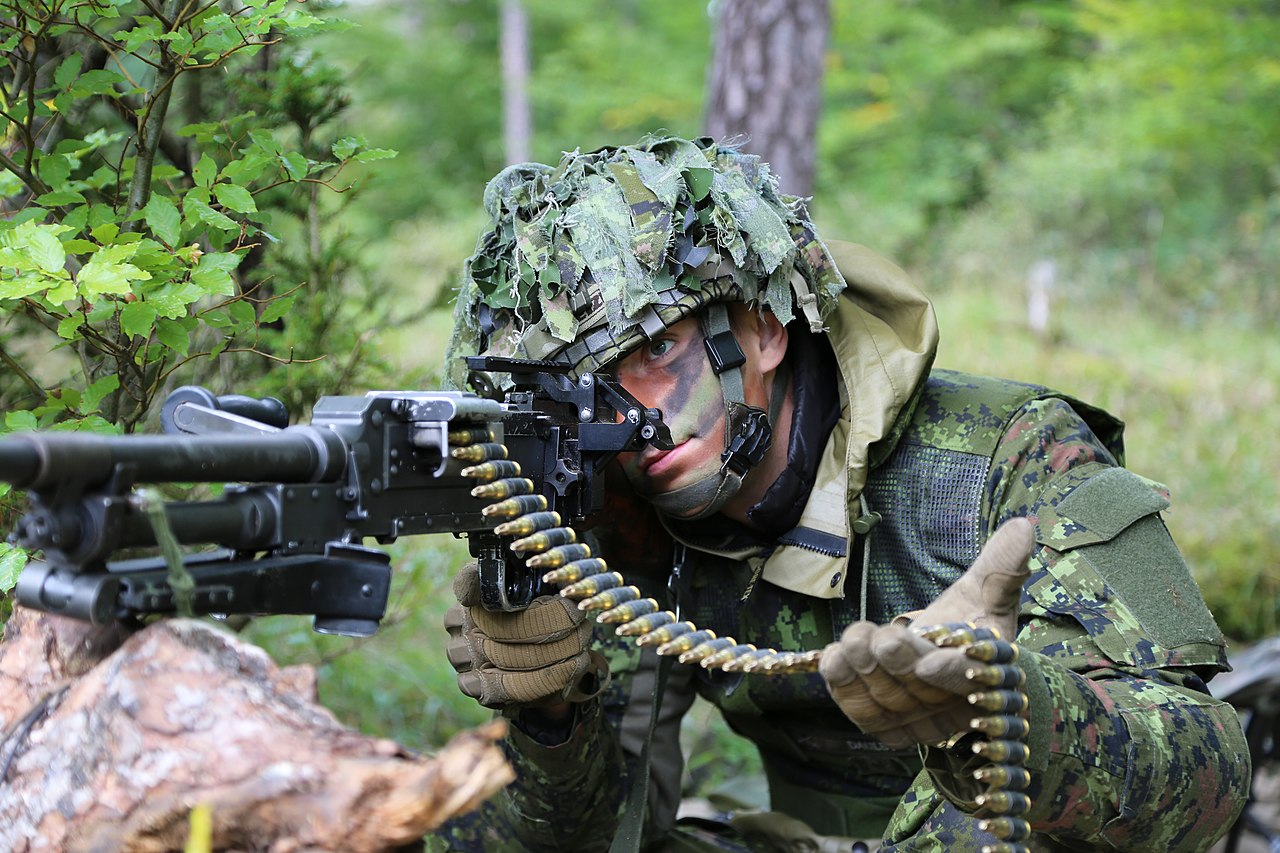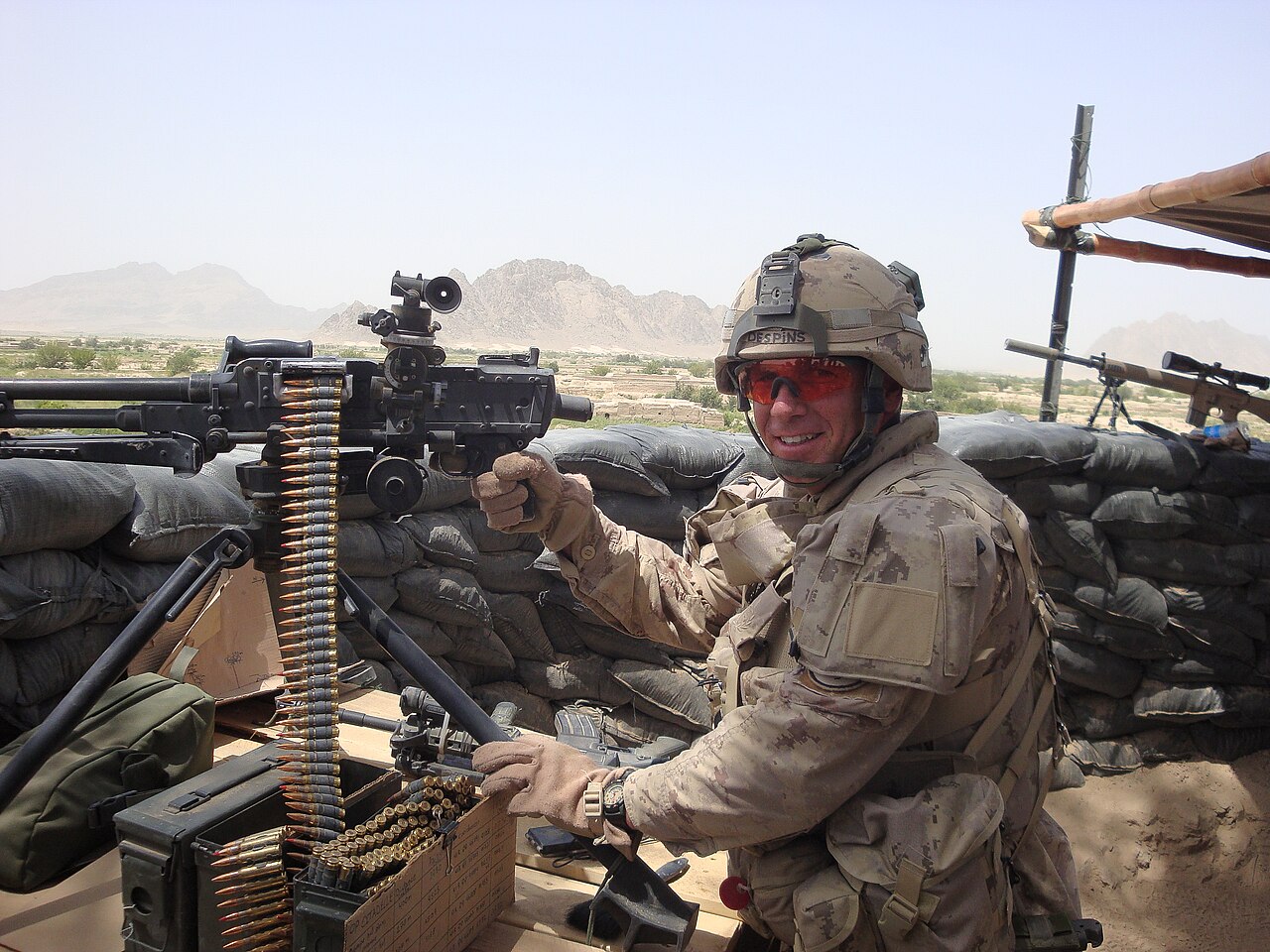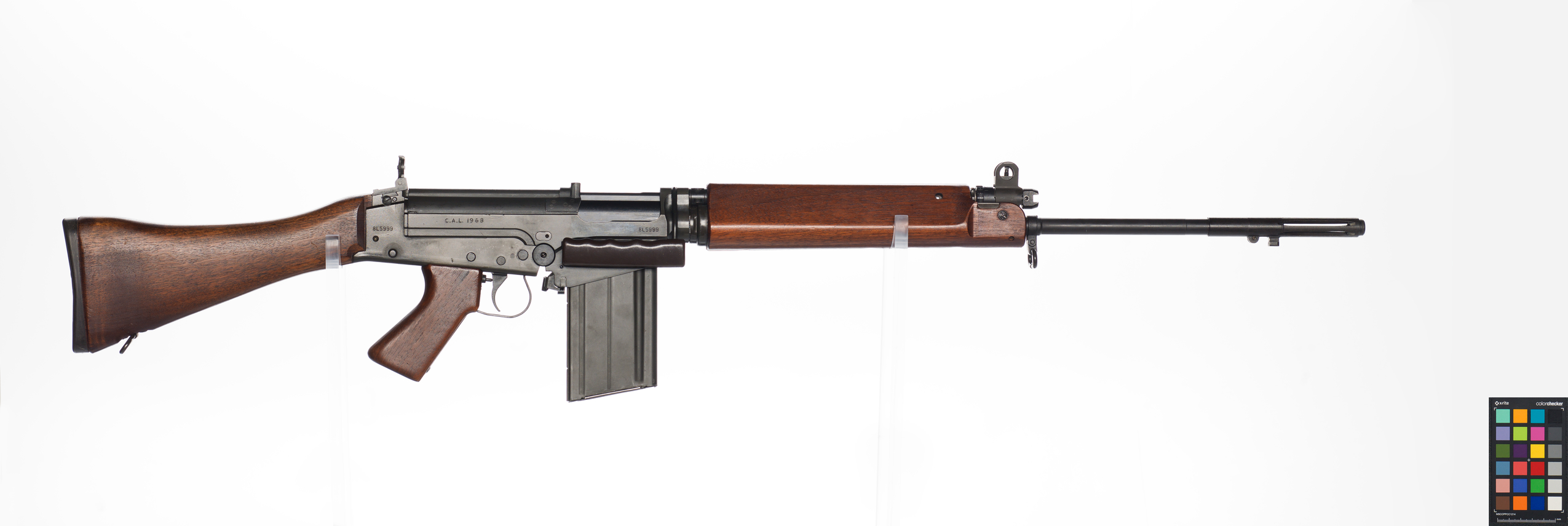The C6 is a 7.62 mm medium or general purpose machine gun. It is based on the FN (Fabrique Nationale) MAG (Mitrailleuse d’Appui Général), which was designed in the 1950s. It first entered service with the Canadian Army in 1978. The C6 is used in both dismounted and mounted roles, primarily by armoured and infantry units. Beginning in 2017, Canada started the process of upgrading its C6 machine guns with the C6A1.

Background
In the 1950s, Sweden asked Fabrique Nationale (FN) in Belgium to produce a belt-fed version of the Browning Automatic Rifle. Ernest Vervier, who had replaced Dieudonné Saive as FN’s primary military small arms designer in 1954, took on the task.
Vervier designed the Mitrailleuse d’Appui Général (MAG) by basically turning the action of a Browning Automatic Rifle upside down. He also coupled the action with a feeding mechanism derived from the very effective German MG42 of the Second World War.
After trials started in the mid-1950s, Sweden became the first to adopt the FN MAG in 1958. Since then, more than 100 other countries have used a general purpose machine gun based on the MAG. It entered British service as the L7 series in 1961 and American service in 1976 as the M240 series. The FN MAG has served in almost every conflict of the last 65 years.
Canadian Army Adoption
During the Second World War, Canadian armoured and reconnaissance units used the American M1919 Browning .30-calibre machine gun on some tanks and armoured cars. The infantry, meanwhile, continued to use the First World War-era Vickers Gun as its medium machine gun. However, it mainly used the Bren gun as its light machine gun.
The Canadian Army eventually adopted the Browning as the C1 and C1A1. Both versions were rechambered from .30-06 to standard NATO 7.62 mm ammunition. Later on, product improvements to the C1 and C1A1 resulted in them being redesignated the C5 and C5A1 respectively. The infantry used the Browning in a ground role as a general purpose machine gun alongside the FN C2 light machine gun. (See FN C1 Self-Loading Rifle.) The Army also mounted Brownings on Centurion tanks, reconnaissance vehicles and M113A1 armoured personnel carriers.
In 1976, Canada adopted new Leopard C1 tanks. Instead of the Browning, the vehicle featured the FN MAG under the designation C6 as both a coaxial and anti-aircraft machine gun. In the mid-1980s, Canadian Arsenals Ltd. produced the C6 under licence to replace the Browning across the Army.

C6 Design and Specifications
The C6 is a fully automatic, air-cooled, gas- and spring-operated machine gun. It is belt-fed, usually from the left. It can fire with a sustained rate of fire of 750 rounds per minute up to a maximum of 1,100 rounds per minute. The rate of fire is adjusted by a gas regulator to provide maximum performance in adverse conditions and during intensive firing. Although the C6 has a maximum range of 3,275 m, its effective range is 900 m.
The C6 uses the standard NATO 7.62 mm x 51 mm linked cartridge. It fires from an open bolt, which helps to prevent a “cook off” ― the result of a round remaining in the chamber of a hot barrel and its powder being ignited. If a C6 barrel overheats through sustained firing, it can be replaced quickly with a new barrel.
At 11.6 kg, the C6 is light enough to be carried by dismounted soldiers, usually on a sling, but it also has a carrying handle. The C6 is normally fired from a bipod, but in a sustained fire role it is mounted on a tripod.

The C6 is capable of performing indirect firing when fitted with the C2A1 sight. It is used with an aiming post to allow the machine gun crew to engage targets they cannot see due to long distances, smoke, fog or darkness.
Employment
The C6 is used mainly in ground support roles. It is mounted in a number of vehicles as a coaxial machine gun, such as in the Leopard 2 and Light Armoured Vehicle 6.0. It can provide fire support to the infantry or for the local defence of the vehicle itself. In other vehicles, the C6 is the main weapon, such as with the Tactical Armoured Patrol Vehicle and the Armoured Combat Support Vehicle. It is also used on a pintle mount on some vehicles as an anti-aircraft weapon and by the CH-146 Griffon helicopter.

In a dismounted role, infantry soldiers use the C6 across the spectrum of operations. This includes advance, attack, defence, delay and withdrawal, as well as patrolling and other functions. It is primarily a platoon-level weapon. Specifically, the C6 is part of the weapon’s detachment in mechanized infantry platoons or the weapon’s section in light infantry platoons under the platoon warrant officer. The basic C6 detachment or section consists of a gunner and an ammunition carrier. Together, they work to keep the gun loaded and on target. The C6 complements the C9 light machine gun, which is found at the infantry rifle section level.
C6A1 Upgrade
In July 2017, the government announced it would purchase the C6A1, an improved version of the C6. Among the improvements are:
- a durable polymer buttstock to replace the original wooden one;
- an external adjustable gas tube regulator to control the rate of fire without the need to disassemble the weapon;
- a weapon-mounted accessory rail, known as a Picatinny rail, which allows the attachment of additional aiming devices and optical sighting systems.
The C6 upgrade was not without its problems. In 2017, the government signed a contract with Colt Canada of Kitchener, Ontario, to manufacture 1,148 of the improved machine guns for $32.1 million. In January 2020, the government announced it would purchase another 3,626 C6A1 versions for $96.97 million, bringing the total number to 4,774.
In 2021, problems with defective parts and other technical issues emerged. This resulted in 342 defective weapons being returned to Colt Canada for repair. During these repairs, additional problems were discovered with some of the machine gun’s parts. More than 1,000 machine guns required repairs. Although Colt Canada made these repairs at no additional cost, some of the new parts were installed by weapons technicians at Canadian Armed Forces bases.
The C6A1 retains the maximum and effective ranges of the C6. The lower end of its sustained rate of fire drops from 750 rounds per minute to 650 rounds, however, while its weight is increased slightly by 0.5 kg to 12.1 kg.

 Share on Facebook
Share on Facebook Share on X
Share on X Share by Email
Share by Email Share on Google Classroom
Share on Google Classroom




